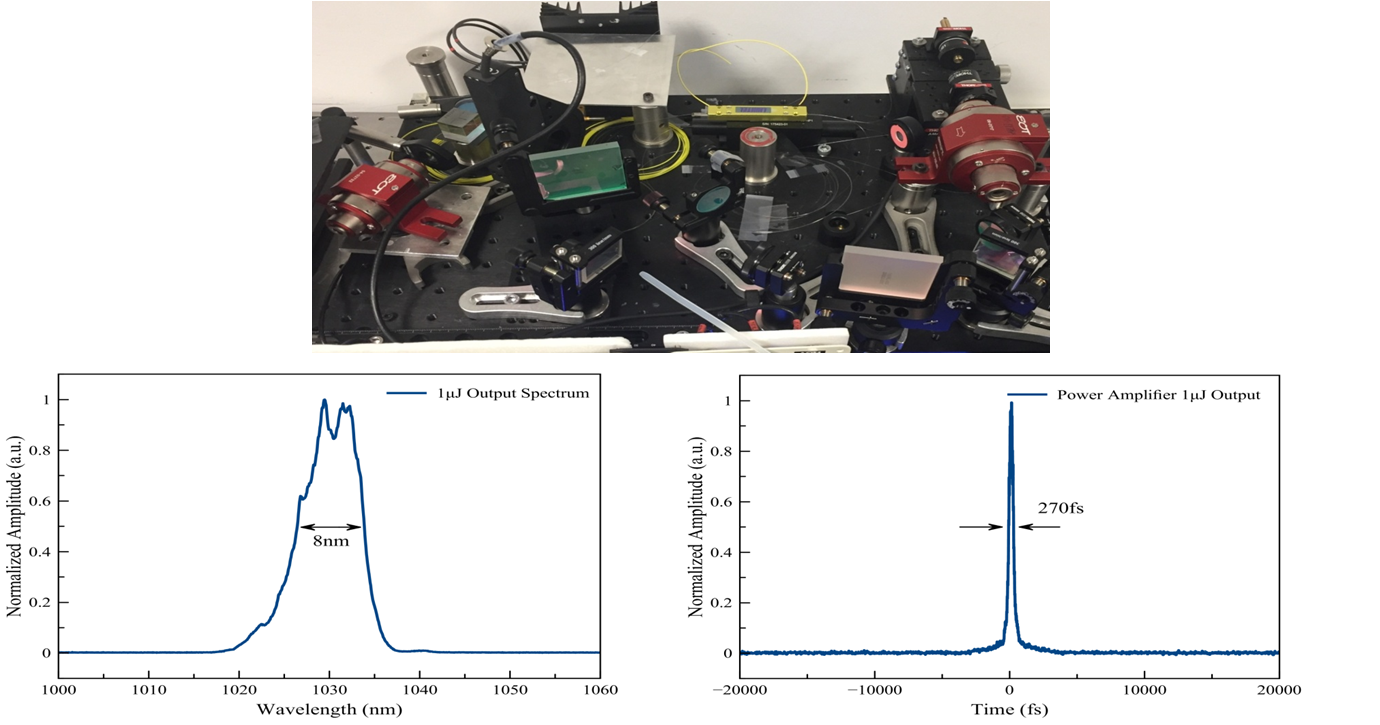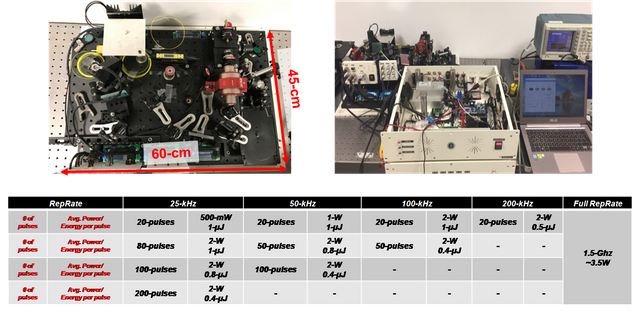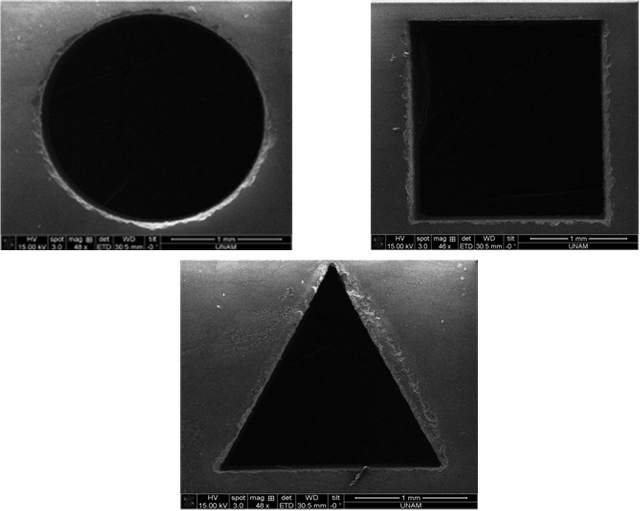A Compact Yb-doped Fiber Laser System for Ablation-Cooled Material Removal
Hi Steemians, today we will present a compact fiber laser system which is“material processing by using ablation-cooled regime”, is a new regime, is found by our group.
First of all, we want to explain what is ablation cooled. Maybe you are familiar with material processing. In material processing by laser, you can make annealing, welding, cutting, marking and engraving, heat treating, converting, cladding, rapid prototyping, glass/sapphire cutting [1] [2] [3] [4] [5].
According to type of material processing, you need to choose your laser system. Actually, there are two options here (except wavelength), one of them is, high power & high energy & low peak power (let’s say HP-HE-LPP) and the other one is, low power & high energy & high peak power (let’s say LP-HE-HPP). HP-HE-LPP systems are used for rough cutting, welding on materials such as metals. However, LP-HE-HPP systems are used for fine cutting on both metals (making some marking) and also for sensitive materials such as tissue, dentine and also glass-like which needs high peak power to break the molecular level inside them. If we gather up the issue, there are two types of processing. One of them is ablation by using temperature and the other one is ablation by breaking the bonds between molecules. As you imagine, temperature ablation will be rough and the other one will be sensitive.
Anyway, in our presentatiton we will present a LP-HE-HPP system which can ablate metal (marking), dentine and also glass.
Let’s start. (Here, we will compare LP-HE-HPP systems. So we are working on sensitive materials)
Ablation Cooled Regime:
First of all, we need to explain what ablation cooled regime is. In traditional way, you have a pulsed system which has a huge peak power but in low repetition rate such as below 100MHz (10ns). We examined that this repetition rate is too slow for ablation. How? When you send a pulse on the material, the thermal diffusion 6, coming from the laser (because you cannot transfer all the laser energy to material and the remaining energy convert to heat), is spreading quickly (in 200ps-picoseconds) inside the material and this thermal diffusion heat all material until the second pulse arrives the surface of the material. In our method, we send the pulses one after another fast enough (GHz-level) to use the that heat which tries to diffuse inside the material. Thus, we are using both laser energy and energy which is converted from the pulses. Let’s visualize this explanation.
.gif)
Then let’s explain what the differences between traditional way and ablation-cooled regime is:
1- At 106x higher repetition rate, pulses interact with each other through the target.
2- This lowers threshold, so we decrease pulse energy, so no plasma shielding.
3- Because the ablated material is physically carried away, the thermal energy is also removed, reducing average temperature!
4- Heat loss due to ablation competes with heat diffusion into the bulk.
Ok, now let’s explain the system. This is explained in the APS March Meeting-2017 and CLEO-2017 Munich Conference (http://ieeexplore.ieee.org/document/8086685/?reload=true)
A Compact Yb-doped Fiber Laser System for Ablation-Cooled Material Removal


“The seed signal is generated by a home-built all-normal dispersion oscillator with a spectrum centered at 1035 nm and 20-nm (FWHM), 100 mW output and 385 MHz repetition rate.”

“After the oscillator, rest of the system is built of polarization maintaining (PM) components and a single-mode pre-amplifier controls both dispersion and nonlinearity in the amplifier system. The pulses are stretched with a 110 m-long fiber after this pre-amplifier and raised to a repetition rate of 1.5 GHz by a multiplier. “

“The signal is amplified again by a second single-mode pre-amplifier before converted into burst-mode via an acousto-optic modulator (AOM). Finally, a forward-pumped double-clad power amplifier, built of PM 10/125 Yb 1200 DC (nLight) fiber and pumped by a 18-W wavelength stabilized diode, boosts the optical power. To compress the pulses, a pair of 1200 line/mm transmission gratings is preferred to denser gratings to limit third order dispersion (TOD). Further, fiber lengths are shortened as much as possible to minimize nonlinear effects including Raman scattering and thus the power conversion efficiency is relatively low, around 20% for the power amplifier. The autocorrelation measurement for the compressed pulses indicates a width of ~250 fs. The amplified output spectrum of FWHM of 14 nm.”

As a conclusion, we demonstrate a compact all-PM-fiber laser amplifier system with an intra-burst repetition rate of 1.5 GHz able to produce bursts ranging from 20-ns to 65-ns duration with 20 μJ to 80 μJ total energy, respectively, and pulses with up to 1 μJ individual energy at burst repetition rates ranging from 25 kHz to 200 kHz. All these parameters are controllable by a computer.

Experimental Results:
Firstly, dentine samples. You can see the differences between traditional regime and ablation-cooled regime (The energy of the these two system is equal to make a comparison). For traditional regime, the dentine burnt. However, in ablation-cooled regime there is no burning part.

Secondly, glass samples. As you see the dimension of the samples, the roughness is about 20um.

Also we want to add a gif of how glass is cutted.
.gif)
If you enjoyed this post, feel free to Upvote, Follow and Resteem
All images used in this post are my own. You are welcome to use them with credit.
References are contained in Hyperlinks throughout the artcile. Everything else is my personal work.


This post has received a 0.16 % upvote from @drotto thanks to: @banjo.
thanks to @banjo
So what are your hobbies? Fooling around?
Physics, sport, science, cinema. Ehat about you?
I don't really have one. But we have a class that teaches music now. I like that.
What kind of music?
Alternative rock.
Wow, which one is your favourite group
Soo much detail in this post.. Thank you.
Thanks for your interest...
Congratulations! This post has been upvoted from the communal account, @minnowsupport, by onderakcaalan from the Minnow Support Project. It's a witness project run by aggroed, ausbitbank, teamsteem, theprophet0, someguy123, neoxian, followbtcnews, and netuoso. The goal is to help Steemit grow by supporting Minnows. Please find us at the Peace, Abundance, and Liberty Network (PALnet) Discord Channel. It's a completely public and open space to all members of the Steemit community who voluntarily choose to be there.
If you would like to delegate to the Minnow Support Project you can do so by clicking on the following links: 50SP, 100SP, 250SP, 500SP, 1000SP, 5000SP.
Be sure to leave at least 50SP undelegated on your account.
Informasi yang menarik dan sangat bagus, terimakasih..
Terima kasih atas minat Anda:)
Emeğinize sağlık çok ayrıntılı ve bilgi dolu bir paylaşım olmuş.
Cok teşekkürler ilginiz icin..